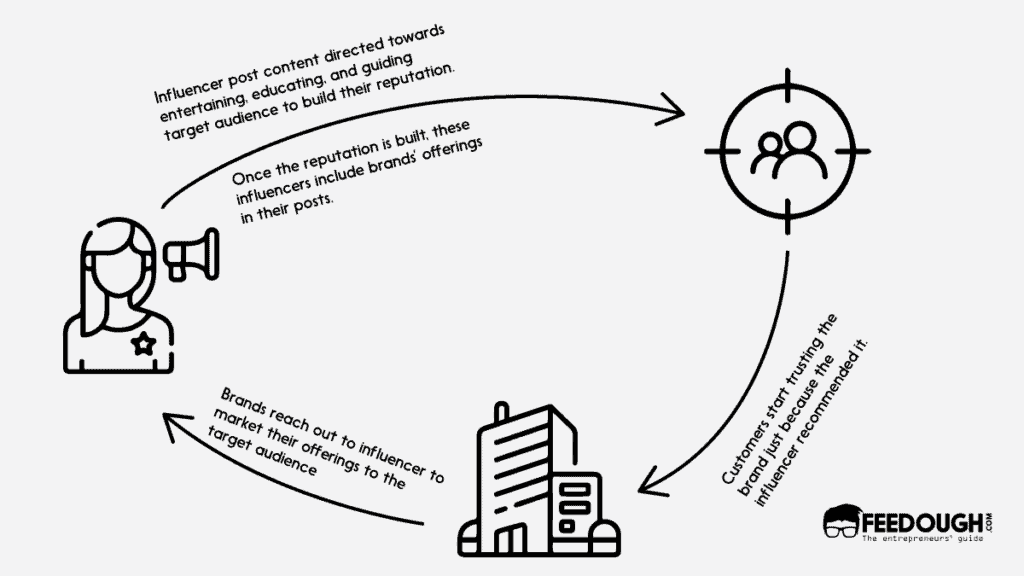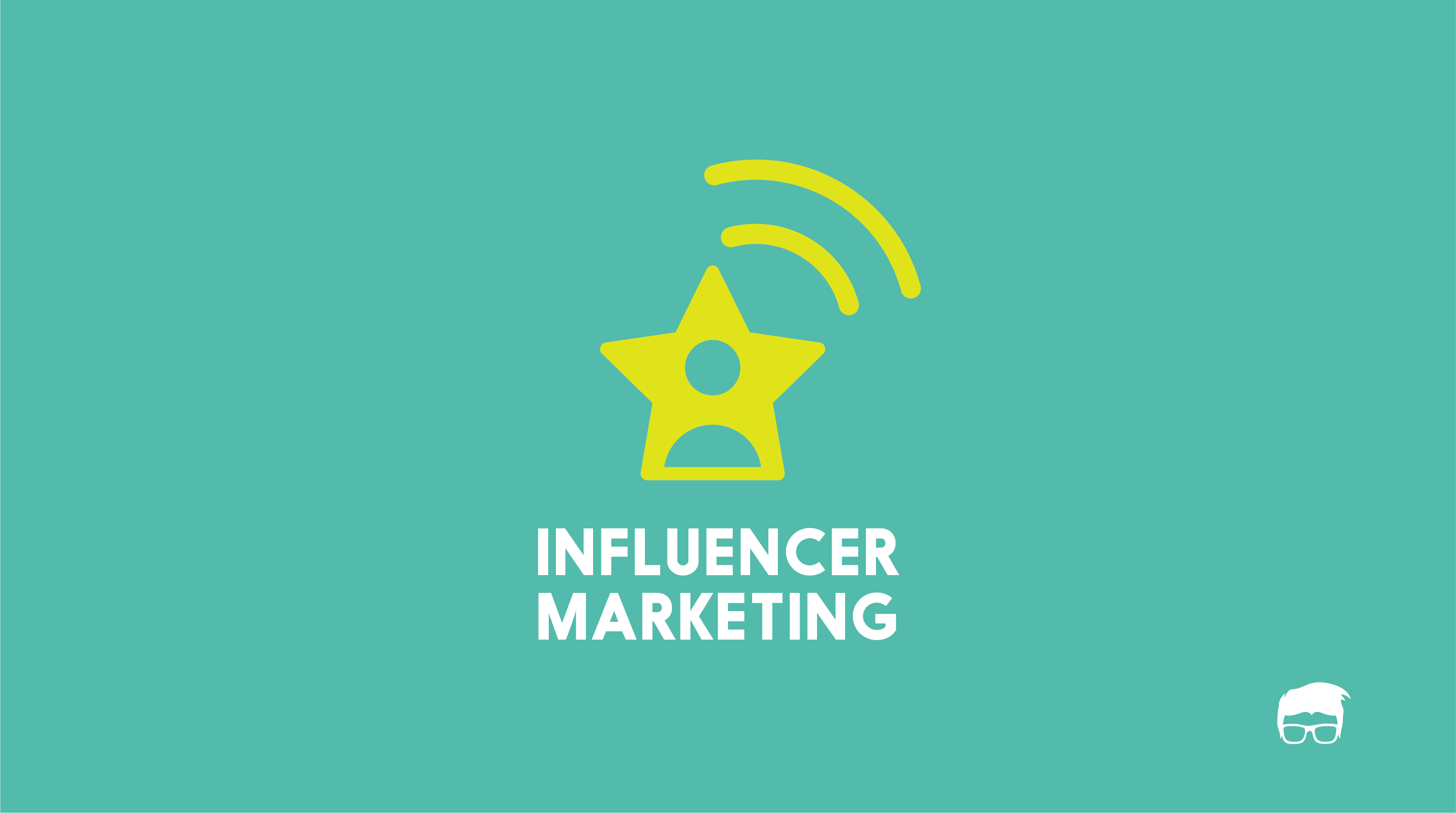Social media marketing has changed the game when it comes to marketing products and services. It used to be that if you were a brand, you would have to pay for ads in multiple media outlets in order to get your product recognised by the general public. However, this is no longer the case!
Influencers have disrupted the social media marketing industry and have taken over where traditional advertising has failed.
But while this word “influencer” gets thrown around a lot these days on social media. Not many people really know what is an influencer or what an influencer actually does. Think of it this way, they are the new salespeople in town, but instead of hiring them for big bucks, brands give away their products and pay them with samples to get their name out there.
What Is An Influencer?
An influencer is a person or a brand with a noticeable following in a particular niche and the power to affect buying decisions of a large group of people.
In simple terms, an influencer or a social media influencer is a brand operating in the social media space that:
- Has a noticeable following in a particular niche. Not just following, but the engagement level on their posts and opinions is also huge. This means that there are many people who engage with the influencer’s content, which in turn makes it more relevant than other social media posts.
- Has the power to become an opinion leader and affect buying decisions of a large group of people. The influencer holds great sway over their followers and, in a way, has a large level of control in their decisions.
How Do Influencers Work?
Influencers are the creators forming the spine of the creator economy.
Their job includes developing content for their followers, engaging with the audience and building a reputation of being the go-to person in their niche.
They are the ones who keep the social media platforms up-to-date by creating trends almost every day. In a way, they help the social media platforms find their next generation of users and keep people coming back through fresh content.
In short, they are the faces people love to watch during breaks, before making important decisions, and even when they are looking for inspiration.
Once the influencers have considerable followership, they start monetising their efforts (posts, articles, videos, etc.) through brand partnerships, affiliate links, brand takeovers, and sponsored posts.

The Importance Of Influencers
Influencers have become the new torchbearer of word of mouth and virality, both for the consumers and the businesses.
They are the new heroes in town, promoting brands and services without putting out explicit ads. But how does this actually help the brands?
For The Consumers
The rise of influencers has changed people’s content consumption habits and buying decisions. People now look up to them to know new trends, learn the latest about a niche, and take recommendations on what they should buy next or which brand they should purchase from.
In a way, this has changed the social media marketing industry as people rely on influencers more than they do brands or companies for recommendations. In fact, over 92% of consumers trust an influencer more than a brand advertisement or celebrity endorsement.
This means that influencers play a great part in influencing people to buy a particular brand or product.
Moreover, with the increased usage of Adblock technologies (over 47% of customers use Adblock), traditional advertisement channels are becoming less effective in educating customers about new brands or services.
For The Brands
With their target audience moving towards influencers for recommendations (49% of consumers make their decisions based on influencer recommendations), influencers as a marketing channel are becoming more relevant than ever.
The key to brand’s success is to build a relationship with their audience, which they can do by collaborating with influencers.
Today, influencers do not just stop at mere recommendations. They actually perform the role of a brand ambassador and help promote brands across their influence platforms. This trend has increased exponentially with big brands opening up to this realm of opportunities and working more closely with the creator economies to promote themselves.
In fact, brands see an average earned media value of $5.78 for every dollar spent on influencer marketing.
Types Of Influencers
When looking at influencers, one should understand that they come in all shapes and sizes.
They do not just vary based on their following base; rather, other characteristics make them different from one another. Some of the factors that separate influencers from each other include followership, the type of content shared, and the industry they operate in.
Based On Followership
The most common and traditional way of categorising influencers is on the basis of how many followers they have. This way, influencers can be divided into five types:
- Mega influencer (over 1 million followers): This is the top 1% of influencers who shape the market, create trends, build new markets, and influence consumer decisions.
- Macro Influencer (500,000 to 1 million followers): Opinion leaders, industry experts, trendsetters are all part of this category.
- Mid-tier influencer (50,000 to 500,000 followers): They have a dedicated niche audience and play an important role in spreading awareness about brands or products.
- Micro-influencers (50,000 to 10,000 followers): They may not have a large following base, but they do enjoy a certain degree of influence which is more than the average social media user.
- Nano-influencer (1,000 to 10,000 followers): Influencers with usually low number of followers but a high engagement rate.
Based On Content-Type
Influencers can be divided into four categories based on the type of content they distribute.
- Bloggers: These influencers share their personal experiences, opinions, and insights on a particular niche using their dedicated websites. They may also offer professional advice to their target audience in the form of articles, video tutorials etc.
- Vloggers: Vloggers share their thoughts and opinions in the form of videos. They take the help of platforms like YouTube, Twitch, and Instagram to reach their target audience.
- Podcasters: Podcasters are influencers who share their content through audio streaming. They are popular with people looking for expert advice on a particular subject or who want to get entertainment.
- Social media posters: Posting on social media is the most common form of content sharing for influencers. They use platforms like Facebook, Twitter, Instagram to share their thoughts, tips & tricks with others.
Based On Industry
Influencers can be divided into four categories based on their industry of expertise:
- Diversified influencers: These are generalists who possess a wide range of knowledge and expertise or are followed by a large audience in several niches. Such influencers include celebrities, politicians, and journalists.
- Industry influencers: These are experts within a particular industry and have a deep understanding of the subject. They can be considered an authority on that specific topic and are further categorised into subject matter experts like fashion influencers, travel influencers, beauty bloggers etc.
Is Influencer A Real Job?
Like any other profession, being an influencer is also a full-time job.
Even though they don’t work under anyone, these influencers are infopreneurs who have daily to-do job lists and specific goals they need to achieve to stay on top of their game.
This profession involves them bridging the gap between a business brand and its target audience using the power of influence.
Influencers usually spend endless hours engaging with their audience, researching to find new opportunities, creating content and sometimes even working on the product they’re promoting.
Some of them also attend live events and conferences or set up their own workshops and seminars to provide more value to their followers and clients.
How Do Influencers Make Money?
Influencers have developed their own creator-centric economy powered by several income streams. These revenue streams include:
- Platform revenue sharing: Influencers who rely on platforms like YouTube or Facebook often earn money by sharing advertisement revenue generated through their content.
- Affiliate marketing: Influencers use their influence to promote brands or products to their audience. In return, they get a commission from the sale of these products.
- Product placement: Influencers with high followership are often paid to promote brands on their social media platforms.
- Brand sponsorship: Brands often involve influencers in their marketing campaigns where these people either take over the brand’s social media channel or include the brand’s offerings in their own channel.
- Subscription-based: Influencers who rely on platforms like OnlyFans use their influence to generate revenue by making people pay for access to exclusive content.
- Self-brand offering: Several influencers even launch their own brand of products or services based on their expertise and knowledge. For example, a lifestyle blogger may launch his or her own line of beauty products.
- Donations: Influencers can also generate revenue from their fans by accepting donations from them.
How Much Money Do Influencers Make?
It pays to be popular. Influencers with a large social media following can make a lot of money, with over 48.49% of influencers agreeing that they make money from being an authority.
According to data by Hype Auditor, an average micro-influencer (with followers between 1K and 10K) earns $1,420 per month, and an average mega influencer (with followers over 1M) earn $15,356 per month.
These influencers spend 28.7 hours per week on average to earn this much.
Go On, Tell Us What You Think!
Did we miss something? Come on! Tell us what you think about our article on what is an influencer in the comments section.
A startup consultant, digital marketer, traveller, and philomath. Aashish has worked with over 20 startups and successfully helped them ideate, raise money, and succeed. When not working, he can be found hiking, camping, and stargazing.









